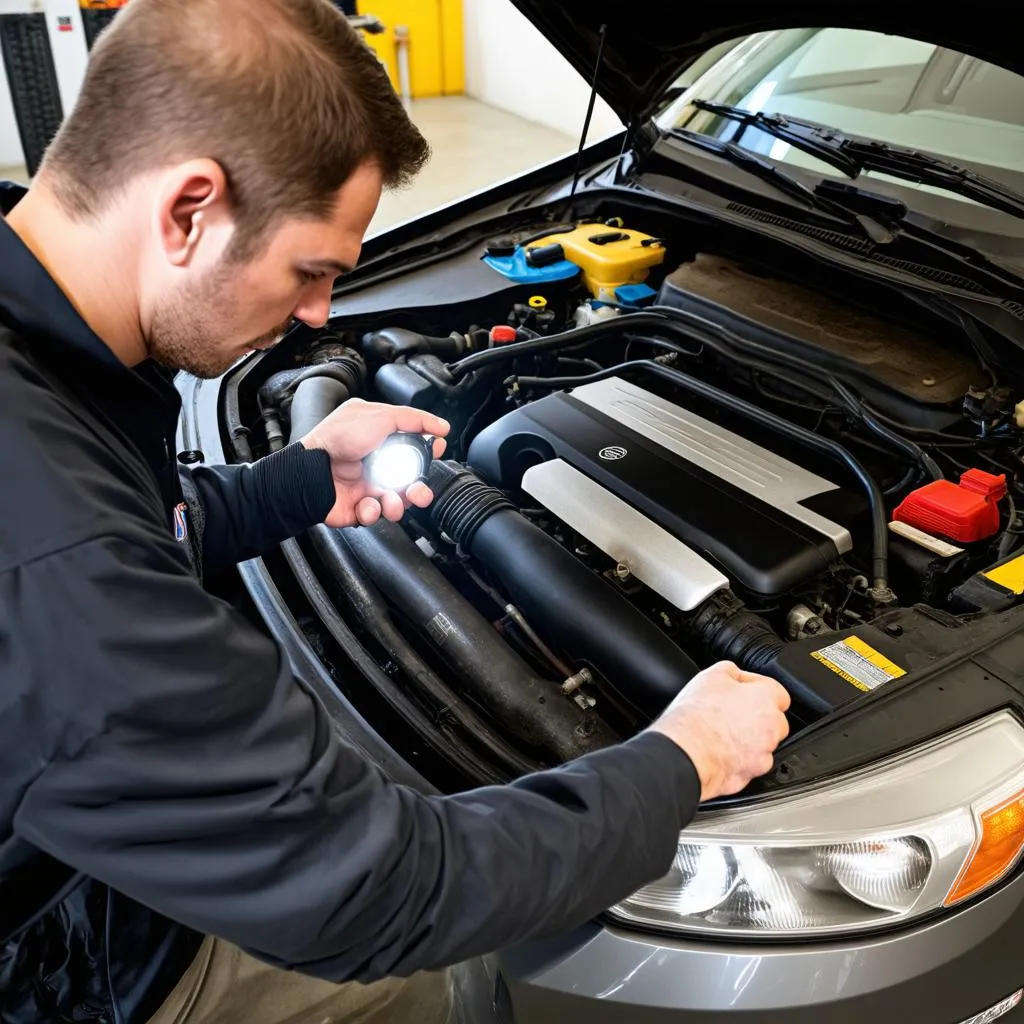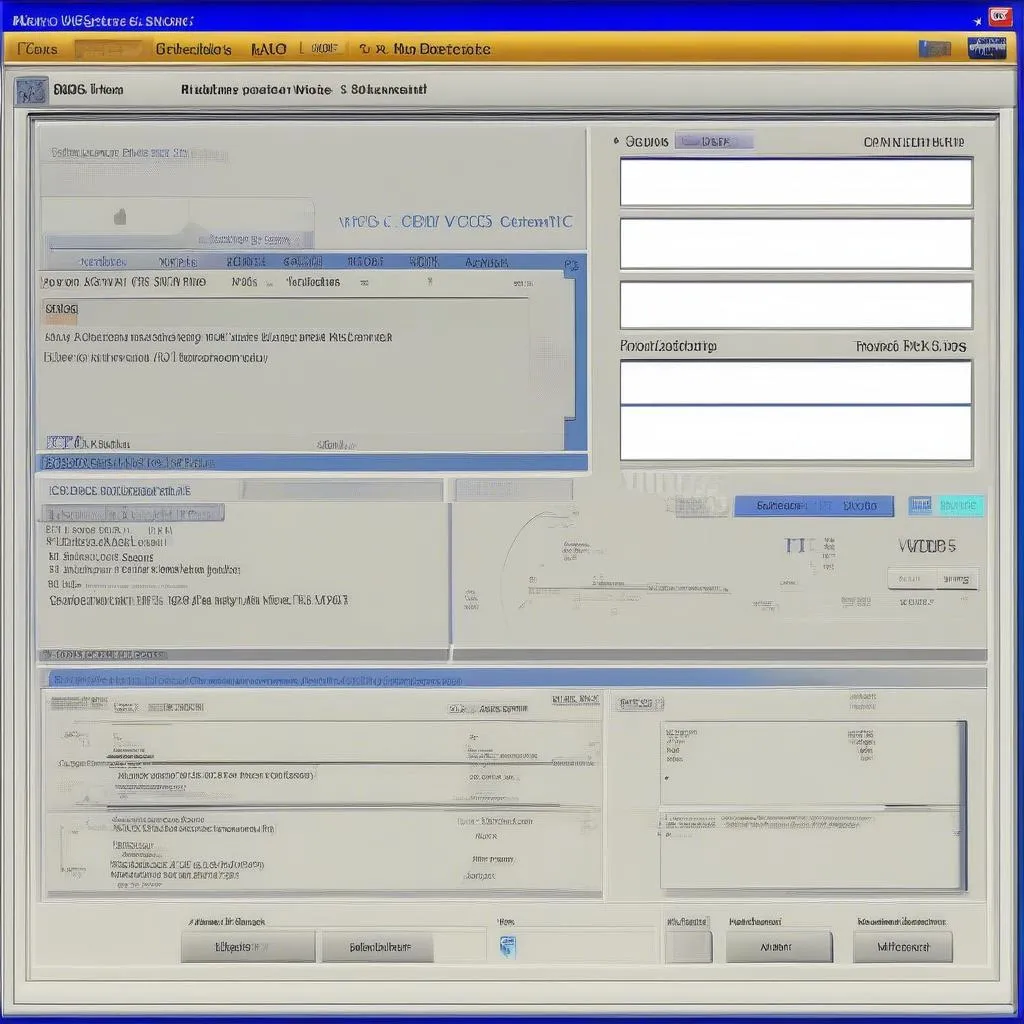Want to diagnose boost pressure issues in your turbocharged vehicle? A VCDS (Vag-Com Diagnostic System) can be your best friend. This powerful tool allows you to monitor various engine parameters, including boost pressure, in real-time. Let’s dive into How To Check Boost Pressure With Vcds and what to look for.
Understanding Boost Pressure and Its Importance
Boost pressure refers to the air pressure created by the turbocharger above the atmospheric pressure inside the intake manifold. This “boost” forces more air into the engine, allowing it to burn more fuel and produce more power.
Monitoring boost pressure is crucial for:
- Identifying potential issues: Fluctuations or deviations from the expected boost pressure can indicate problems with the turbocharger, intercooler, boost leaks, or related sensors.
- Optimizing performance: Ensuring your engine achieves the correct boost pressure is vital for optimal power delivery and fuel efficiency.
A Step-by-Step Guide to Checking Boost Pressure with VCDS
Here’s a detailed guide on how to check your vehicle’s boost pressure using VCDS:
1. Connect and Setup:
- Connect your VCDS interface to your vehicle’s OBD (On-Board Diagnostics) port, usually located under the dashboard on the driver’s side.
- Turn on the ignition but do not start the engine.
- Launch the VCDS software on your computer and establish communication with your vehicle.
2. Select Engine Module:
- Once connected, select “Select Control Module.”
- Choose “Engine” from the list of available modules.
3. Go to Measuring Blocks:
- Within the Engine module, select “Measuring Blocks – 08.”
4. Choose the Correct Group:
- The specific group number for boost pressure varies depending on your vehicle’s make and model.
- Consult your vehicle’s service manual or a reliable online forum to identify the correct group number.
5. Monitor Boost Pressure:
- Once you’ve selected the appropriate group, the display will show various engine parameters, including boost pressure.
- The value is typically displayed in millibars (mbar) or hectopascals (hPa).
6. Test Drive and Observe:
- Clear any fault codes before proceeding.
- Take your vehicle for a test drive, preferably on a road where you can safely accelerate and reach higher RPMs.
- Carefully monitor the boost pressure readings in real-time.
 Boost pressure graph
Boost pressure graph
7. Compare and Analyze:
- Compare the observed boost pressure values with the manufacturer’s specified values for your vehicle.
- Look for any significant deviations, fluctuations, or spikes in the boost pressure during acceleration and deceleration.
Interpreting the Results: What to Look For
Analyzing the boost pressure readings is crucial. Here’s what you should pay attention to:
- Low Boost Pressure: This could indicate a leak in the intake system, a faulty boost control solenoid, a restricted air filter, or even a problem with the turbocharger itself.
- High Boost Pressure (Overboost): Overboosting can damage your engine. It can be caused by a faulty boost control valve, a malfunctioning wastegate, or issues with the ECU’s boost control programming.
- Fluctuating Boost Pressure: Inconsistent boost pressure may point towards a boost leak, a failing diverter valve (DV), or a problem with the boost pressure sensor itself.
FAQs about Checking Boost Pressure with VCDS
Q: What is a normal boost pressure reading?
A: There is no single “normal” boost pressure. It varies greatly depending on the engine, turbocharger, and manufacturer specifications. Consult your vehicle’s service manual for the expected boost pressure range.
Q: Can I adjust boost pressure with VCDS?
A: While VCDS is a powerful tool, it’s not recommended to adjust boost pressure without proper knowledge. Improper adjustments can lead to engine damage. Consult a qualified mechanic or tuner for safe and reliable performance tuning.
Q: I’m experiencing boost leaks. What should I do?
A: Boost leaks can significantly impact performance. If you suspect a boost leak, a thorough inspection of the intake system is necessary. Look for loose clamps, cracked hoses, or damaged intercooler fins.
 Mechanic inspecting engine
Mechanic inspecting engine
Need More Help? Cardiagtech is Here for You!
For any questions or assistance with automotive diagnostic tools like VCDS, CARDIAGTECH is your trusted partner. We provide a wide range of high-quality diagnostic equipment and resources to help you keep your vehicle running smoothly.
Contact us today for expert advice and solutions tailored to your automotive needs!
Conclusion
Checking your vehicle’s boost pressure with VCDS is a relatively straightforward process that can provide valuable insights into your engine’s health and performance. Remember to interpret the readings carefully and consult with a qualified mechanic or tuner for any adjustments or repairs.
Remember, a well-maintained turbocharged engine is a happy engine!


